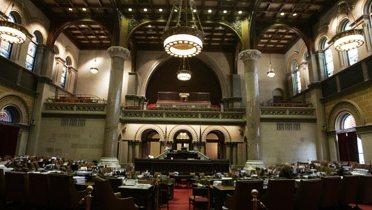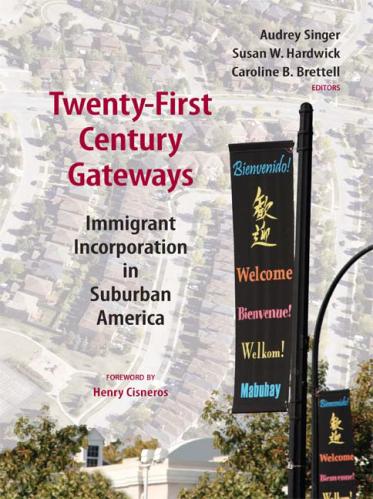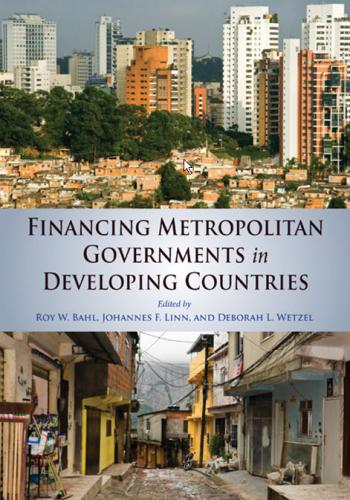The Great Recession and the sluggish recovery have been a wake-up call for the nation. Americans, both policy-makers and voters alike, believed that we could build a sustainable economy on consumption, on endless acres of condos and starter mansions, and on financial products conjured from mathematical models and wishful thinking.
Clearly, it is time to chart a different path. We need to rebalance the American economy and cultivate the fundamentals that can bring prosperity back: robust exports, low-carbon technology, continuous innovation, and opportunity for all. And the path to a different and better American economy runs directly through our metropolitan areas.
The largest 100 metropolitan areas in the country are home to about two-thirds of the U.S. population and generate 74 percent of our GDP. In fact, metro areas generate the majority of economic output in 47 of the 50 states, including such “rural” states as Nebraska, Iowa, Kansas, and Arkansas. Metros are anchored by cities, but they aren’t synonymous with them. Metros include suburbs, edge cities, boomburbs, exurbs, exit-ramp office parks, strip-mall zones, and even rural areas. They aren’t defined by the number of skyscrapers, Starbucks, or iPads per capita, but are united by a shared economy.
Metros will lead the United States into the next economy because they possess the assets that modern economies need. Metros dominate U.S. trade and logistics. They concentrate the innovative firms, advanced research institutions, venture capital, breakthrough technologies, and skilled workers that will drive the next economy. And they are where networks of universities and community colleges stand ready to educate the next generation of U.S. workers. In short, metros bring together ideas, people, and technology in a virtuous cycle that generates more innovation and attracts still more people.
There is a lot that the federal government could do to lay the groundwork for the flourishing of metropolitan America: Set a price on carbon, invest intelligently in advanced research and development, make transformative investments in infrastructure, and overhaul our immigration laws. (We proposed some of these ideas in a Democracy essay, “Miracle Mets.” [Issue #12]) But no one believes that the federal government will do these things this year or the next. At best, it can attempt some targeted policy interventions around trade, maybe infrastructure, possibly tax reform. While Washington is strangled by partisanship and polarization, states will have to take up the burden of invigorating metropolitan areas and kick-starting the economy. Indeed, rebalancing the economy will require reorienting—radically—the focus of state government.
The role of states as “laboratories of democracy” is a mainstay of American federalist lore and study. States have broad powers over such market-shaping policy areas as infrastructure, energy, innovation, education, and skills training. Successful state leaders, whatever their partisan commitments, are usually forced to get extremely practical extremely fast because they have to balance their budgets and adhere to deadlines. They are also more easily held accountable for those budget decisions, especially when those involve program and personnel cuts. Many state leaders (and their local elected, business, and civic counterparts) are members of what we call a “pragmatic caucus,” in sharp contrast to ideologically driven federal lawmakers.
Yet the traditional assessments of state innovation fail to capture the real economy-building secret of states—namely, their special relationship with metropolitan areas. In the American system, metropolitan areas (and their component parts: cities, counties, suburban municipalities, and rural towns) are all creatures of state law. The state determines everything: the boundaries of cities and municipalities, the extent of their powers, the flexibility or rigidity of powers and borders. In other words, the state government decides who does what, where, and with whom.
States, though, are not accustomed to using their broad powers to unleash fully the entrepreneurial energies and dynamism of their metropolitan areas. In fact, states have often taken the opposite approach, constricting their metros fiscally and governmentally. State leaders need a profound shift in mindset. In the global economy, metros matter more than states, and states will succeed to the extent they can bolster their metro economies. An unintended legacy of the Great Recession may be the most significant restructuring of the mission and focus of state government since the progressive movement a hundred years ago.
The Brookings Institution is committed to quality, independence, and impact.
We are supported by a diverse array of funders. In line with our values and policies, each Brookings publication represents the sole views of its author(s).








Commentary
Metro Connection
March 16, 2011